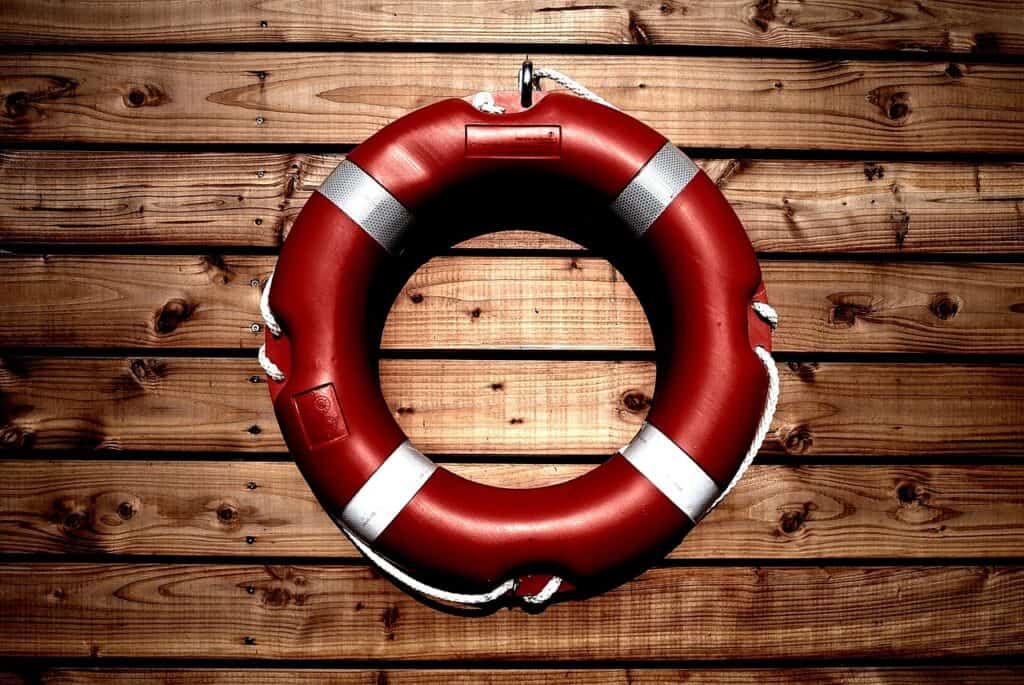The word “saving” is a common part of most adults vocabularies. Saving for retirement. Saving for a house. Even saving room for dessert. But if you haven’t started saving in your emergency fund yet, you’re missing a crucial cornerstone of your financial strategy.

What is an emergency fund?
An emergency fund is any savings earmarked specifically for unplanned or emergency expenses or periods of hardship. In other words, it’s a safety net that catches you when you stumble financially.
What is an emergency fund used for?
Emergency funds exist to see you through life’s tough or unexpected moments without taking on debt or tapping your retirement. Common reasons to spend your emergency fund include:
- Suffering a major medical or dental event
- Needing to replace or repair appliances or your vehicle
- Urgent home renovations or repairs
- Unexpected job loss
- Urgent veterinary care for your pet
- To replace broken electronics needed for work or school
- Traveling for a family emergency
What counts as an “emergency”?
But life isn’t always so black and white. Sometimes, it’s hard to determine what constitutes a true financial emergency.
Forgetting to save for holiday presents? Not an emergency.
Forgetting to set aside funds for your annual car insurance premium, or a new car seat for your growing child? That’s a little trickier.
Setting some guidelines, a litmus test of sorts, can help you make these decisions. Before spending from your emergency fund, ask yourself three questions:
- Is the expense necessary?
- Is the expense urgent? (I.e., can it wait a few months while you save up?)
- Will paying the bill out-of-pocket put you into debt?
If you answer yes to all three questions, chances are, it’s worth tapping your fund.

How much should you have in your emergency fund?
Conventional wisdom says to save at least 3-6 months’ worth of regular household expenses in your emergency fund. That includes rent, utilities, debt payments, groceries, insurance premiums, and childcare.
But this is just generalized advice. Every family should set their own threshold for emergency savings. For example, if you have a medically fragile child or spouse or a more expensive lifestyle, you may want a bigger buffer. Some families aim to sock away a year or more’s worth of expenses to provide an extra cushion.
Alternatively, if you’re living paycheck-to-paycheck, you may want to set smaller goals – at least to start. Saving anything is a win: if all you can afford is 3% of your take-home, that’s great! Even a small fund might mean the difference between taking on debt or breathing easy through your next dental visit.
Where should you keep your emergency savings?
Ideally, you’ll want your emergency fund liquid (that is, in cash) and relatively easy to access. At the same time, you don’t want to make it too tempting to spend.
For many people, the perfect place to park your fund is an FDIC- or NCUA-insured high-yield savings account. These accounts are often offered by online banks and local credit unions, and may pay out substantially higher interest rates than larger “chain” banks.
Another option is a no-penalty certificate of deposit (CD), which may pay higher interest without charging a fee if you need to withdraw funds early. (Or, you can choose a CD that does charge penalties to disincentivize early withdrawals.)
Money market accounts also tend to pay higher rates than regular savings accounts. Some even set minimum monthly balance requirements, reducing the urge to spend unnecessarily.

How to build your emergency fund from the ground-up
Building an emergency fund takes time and dedication. The key is finding a strategy that fits your lifestyle and protects your financial plan. It starts with seven easy steps.
1. Set a target
First up, you’ll want to determine your end goal. For many families, 3-6 months’ worth of living expenses is a great start – you can always revise upward later.
2. Set a monthly savings goal
Next, set a monthly savings goal.
Remember that building savings takes time, particularly if things are tight financially. Look at your budget and determine what you can afford to save, whether that’s $500 a month, $50 a week, or 5% of your monthly take-home. Be sure to earmark this amount in your monthly budget so every dollar’s accounted for!
And don’t be afraid to start small. The goal is to build good savings habits you can afford, not to overwhelm your finances. You can always readjust your strategy as you reach financial milestones and increase your income.
3. Make consistent contributions
As you’ve heard a million times before: consistency is key.
One great trick to keep your savings on track is to set up automatic contributions through your bank. After establishing your schedule, your money will move from checking to savings on time, every time.
Alternatively, you might sign up for split direct deposits from your employer or other sources of regular income. Aside from hassle-free savings, it’s less tempting to spend money that never hits your checking account.
4. Supercharge your savings every chance you get
Keeping your emergency funds in a high-yield account propels your savings even faster, thanks to compound interest (which is when interest grows on interest). But don’t wait for the market to do its work – you can supercharge your savings yourself by:
- “Rounding up” debit card purchases by having your bank move the leftover pennies to your savings account
- Stashing some or all of your tax refund in your emergency fund
- Adjusting your W-2 form to withhold less money for taxes and boost your savings year-round (only if you chronically overpay the IRS)
- Saving a percentage of every windfall – inheritance, lottery winnings, holiday and birthday presents, workplace bonuses, etc.
5. Regularly monitor your progress
Keep tabs on your emergency savings balance. Whether you receive alerts after every contribution or check your account monthly, watching your progress provides the incentive to move forward.
6. Keep going after reaching your goal
After reaching your original goal, consider aiming even higher. Extended illnesses, unemployment, or particularly large emergency bills can eat into a few months’ expenses in no time. A bigger buffer means more protection in the event of a worst-case scenario.
If you’ve already amassed 1-2 years’ worth of expenses in a high-yield account, move your contributions to another saving or investment account. Don’t break your good habits just because you’ve met one goal – rather, replace it with a new one.
7. Replenish your fund when you use it
Crucially, if you tap your fund for any reason, be sure to re-up as soon as possible. You never know when you’re going to need that money again!

Your emergency fund is a lifeline – treat it like one
Your emergency fund should be an essential component of your long-term financial and savings strategy. Once you’ve reached your savings threshold, don’t drop the rope: move on to bigger savings elsewhere. And if you have to tap your account, rebuild your balance as quickly as possible to keep your safety net intact.
